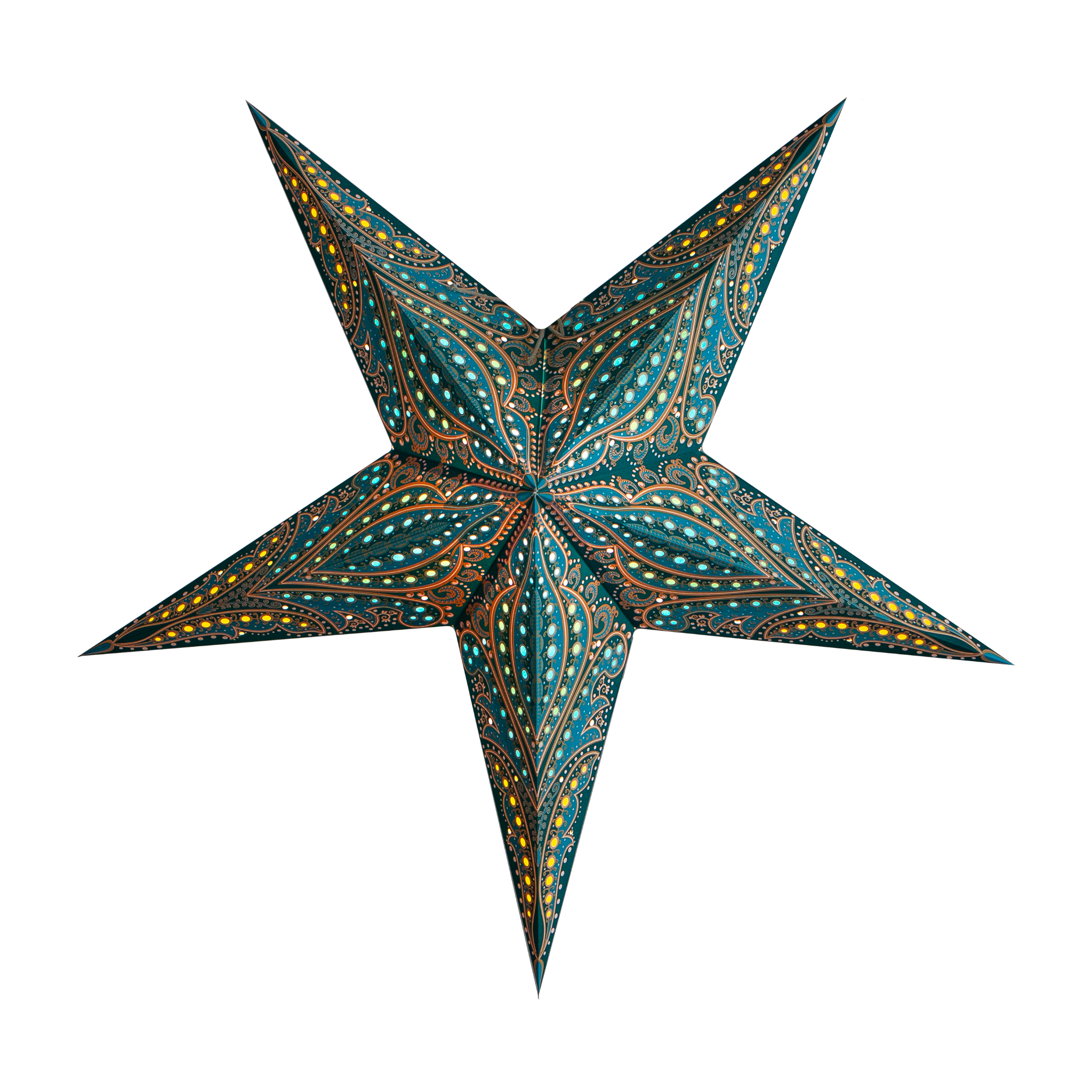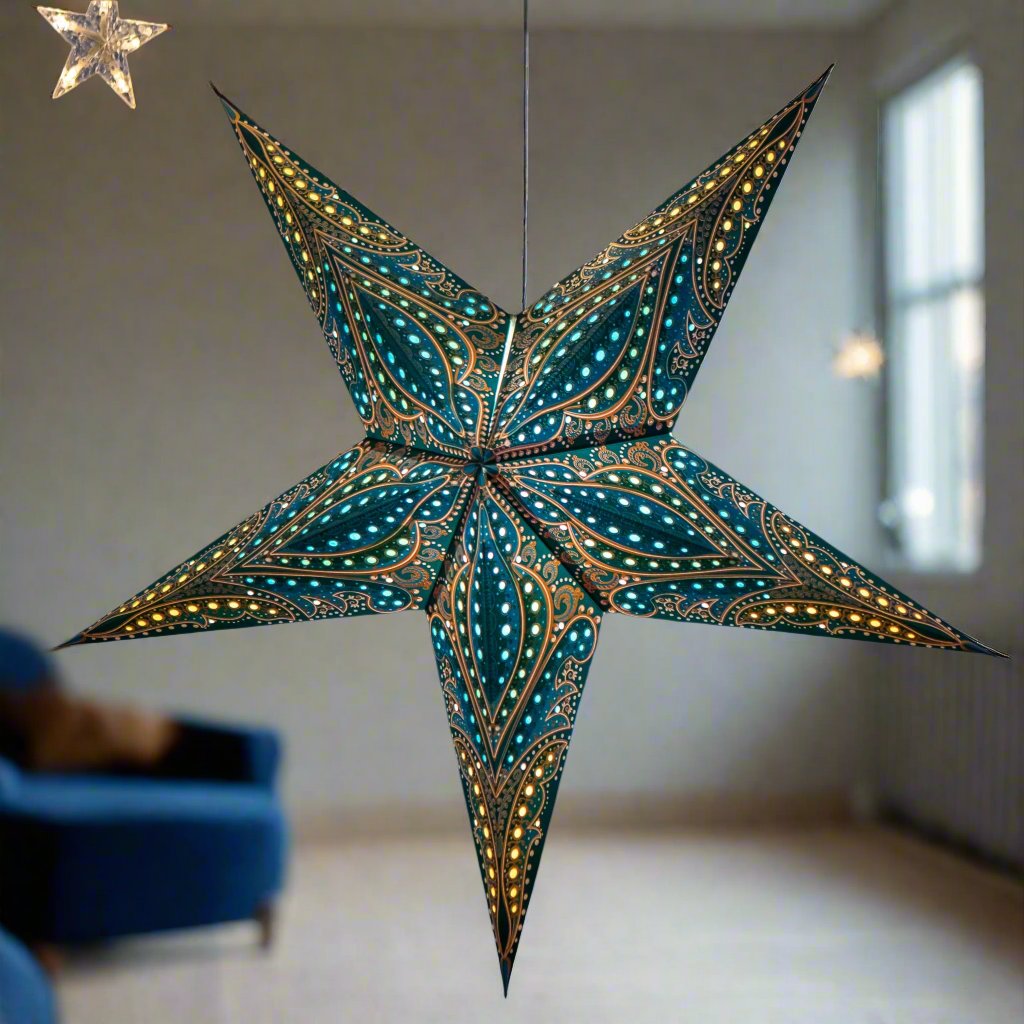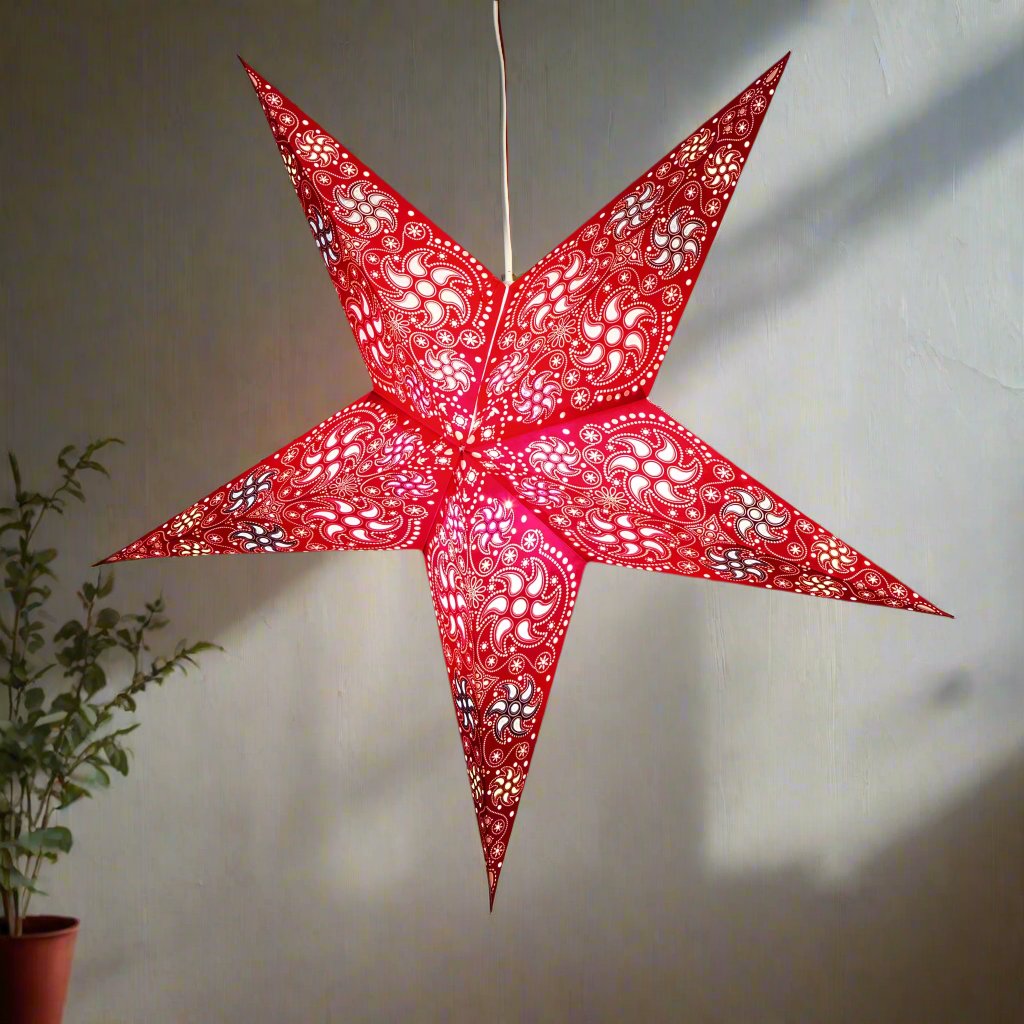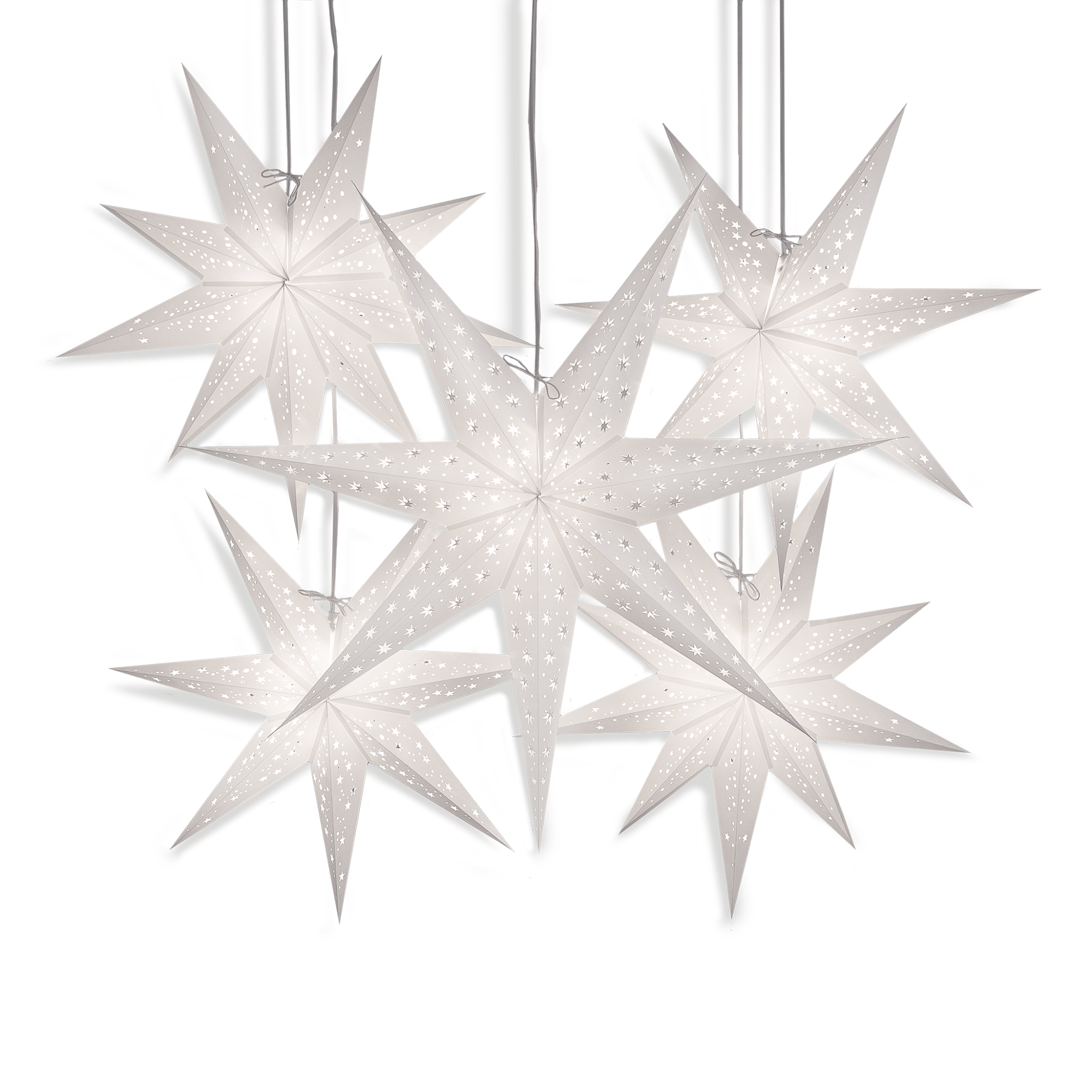Lighting is more than just a way to brighten a space—it directly affects our mood, energy levels, and productivity. Whether we’re working in an office, relaxing at home, or shopping in a store, the type of lighting around us plays a significant role in how we feel and function.
Studies show that different lighting conditions can impact emotions, concentration, and even sleep patterns. From the warm glow of a candlelit dinner to the harsh brightness of office fluorescents, lighting has the power to stimulate or soothe our minds.
In this article, we’ll explore how various types of lighting influence our psychological well-being and how we can use lighting to enhance mood and productivity in different environments.
The Science Behind Lighting and Psychology
How Light Influences Human Biology
Light affects our body’s biological processes, particularly the production of hormones like melatonin and cortisol. Melatonin regulates sleep, while cortisol is linked to stress and alertness. Exposure to certain types of light at the right times can either boost our energy or help us relax.
The Role of Circadian Rhythms
Our circadian rhythm, also known as the body’s internal clock, is heavily influenced by light exposure. Natural sunlight helps regulate this cycle, ensuring that we stay awake during the day and sleep at night. Disrupting this cycle—such as using bright screens before bed—can lead to sleep disturbances and fatigue.
Types of Lighting and Their Effects on Mood
Natural Light
Natural light is the most beneficial type of lighting for human well-being. It enhances mood, reduces stress, and boosts vitamin D levels. Studies have found that workplaces with large windows allowing natural light can increase productivity and reduce eye strain. Photo by Pascal van de Vendel on Unsplash
Photo by Pascal van de Vendel on Unsplash
Artificial Light: LED, Fluorescent, and Incandescent
-
LED Lighting: Energy-efficient and versatile, LED lights can be adjusted to emit different colour temperatures.
-
Fluorescent Lighting: Often used in offices and schools, fluorescent lights are bright but can cause headaches and eye strain.
-
Incandescent Lighting: Produces a warm, cosy glow but is less energy-efficient than LEDs.
Warm vs. Cool Light
-
Warm Light (Yellow/Orange Tones): Creates a relaxing, comfortable atmosphere, ideal for living rooms and bedrooms.
-
Cool Light (Blue/White Tones): Enhances alertness and focus, making it perfect for workplaces and study areas.
How Different Colours of Light Affect Mood and Productivity
 Photo by Kenneth Oflas on Unsplash
Photo by Kenneth Oflas on Unsplash
Blue Light
-
Boosts alertness and concentration
-
Commonly found in computer screens and LED lighting
-
Best for offices but harmful if used before bedtime
Red Light
-
Encourages relaxation and sleep
-
Used in night lights and therapy settings
-
Can reduce stress and anxiety
Yellow and Orange Light
-
Evokes warmth and comfort
-
Creates a cozy and inviting atmosphere
-
Great for restaurants and living spaces
Green Light
-
Has a calming and stress-reducing effect
-
Used in hospitals and wellness centres
-
Helps with relaxation and focus
White Light
-
Neutral and balanced
-
Common in offices and commercial spaces
-
Ideal for general-purpose lighting
Best Lighting for Productivity and Focus
For workplaces and study environments, proper lighting is crucial for maintaining focus and reducing eye strain. Here are some tips for optimising productivity with lighting:
-
Use adjustable LED lighting to switch between warm and cool tones.
-
Maximise natural light by positioning desks near windows.
-
Reduce glare by using diffusers and indirect lighting sources.
-
Avoid overly bright or dim lighting, as both can cause fatigue.
Cultural and Seasonal Effects of Lighting
Lighting isn't just about science; cultural and seasonal factors also influence how we perceive and use light. Spirit Pebble Grey | Paper Starlights
Spirit Pebble Grey | Paper Starlights
How Lighting Varies Across Different Cultures
-
Scandinavian Countries: Due to long, dark winters, these countries emphasise warm indoor lighting (like candles and fireplaces) to create a cosy atmosphere, known as hygge.
-
Asian Cultures: Traditional paper lanterns and soft lighting create a calming ambiance.
-
Middle Eastern Design: Uses ornate lamps with warm tones to enhance aesthetics and mood.
Seasonal Affective Disorder (SAD) and Light Therapy
Seasonal Affective Disorder (SAD) is a type of depression that occurs during winter due to a lack of sunlight. Light therapy lamps, which mimic natural daylight, are commonly used to combat this condition by:
-
Boosting serotonin levels to improve mood.
-
Regulating sleep cycles by influencing melatonin production.
-
Reducing fatigue and enhancing overall well-being.
How Lighting Affects Sleep Patterns
Lighting plays a crucial role in regulating our sleep cycles. The type, intensity, and timing of light exposure significantly impact melatonin production—the hormone responsible for sleep regulation. Photo by Jp Valery on Unsplash
Photo by Jp Valery on Unsplash
The Impact of Blue Light on Melatonin Production
Blue light, which is emitted from electronic screens (phones, laptops, and TVs), tricks our brain into thinking it's still daytime. This suppresses melatonin production, making it harder to fall asleep. Studies suggest that using screens before bed can lead to insomnia and poor sleep quality.
How to Reduce Blue Light Exposure at Night:
-
Use "night mode" on electronic devices to reduce blue light emission.
-
Wear blue light-blocking glasses if you work late.
-
Opt for warm, dim lighting in the evening to prepare your body for sleep.
Best Lighting for a Restful Sleep Environment
To promote deep and restful sleep, consider the following lighting adjustments:
-
Dim, warm lighting (red or amber tones): Ideal for winding down before bed.
-
Smart bulbs with gradual dimming: Help mimic natural sunset patterns.
-
Complete darkness: Use blackout curtains and turn off unnecessary lights for uninterrupted sleep.
The Psychological Impact of Dim vs. Bright Lighting
Lighting intensity affects how we feel and behave. While some situations require bright lighting, dimmer settings can create a relaxing atmosphere.
When to Use Dim Lighting for Relaxation
Dim lighting is best suited for evening relaxation, meditation, and intimate settings. It signals to the brain that it's time to slow down, reducing stress and promoting comfort.
Examples of where dim lighting is beneficial:
-
Bedrooms: Promotes a cosy and sleep-friendly environment.
-
Restaurants and Cafés: Creates a warm and intimate dining experience.
-
Spas and Wellness Centres: Helps in relaxation and mental rejuvenation.
How Bright Lighting Enhances Alertness
On the other hand, bright lighting increases energy levels and focus. It stimulates the brain, keeping you alert and engaged. However, excessive brightness can cause eye strain and fatigue. Photo by z ww on Unsplash
Photo by z ww on Unsplash
Bright lighting is best for:
-
Offices and Workspaces: Keeps employees alert and enhances productivity.
-
Hospitals and Clinics: Ensures clear visibility and alertness.
-
Classrooms and Study Areas: Helps students focus and retain information.
The Role of Smart Lighting in Mood Regulation
Technology has revolutionised lighting, making it easier than ever to adjust lighting conditions to match our moods and needs.
Adjustable Lighting and Its Benefits
Smart lighting systems allow users to control brightness, colour temperature, and schedules through apps or voice commands. This helps create a personalised lighting environment that supports both productivity and relaxation.
Benefits of smart lighting:
-
Adaptive lighting: Changes brightness based on the time of day.
-
Colour-changing bulbs: Adjust light colours to influence mood and energy.
-
Motion sensors: Automatically adjust lighting for energy efficiency.
Smart Bulbs and Customisable Lighting Settings
Popular smart lighting brands like Philips Hue and LIFX offer customisable features, including:
-
Sunrise simulation: Gradually brightens lights in the morning to mimic natural sunlight.
-
Relaxation mode: Reduces blue light exposure in the evening for better sleep.
-
Focus mode: Increases cool-toned lighting to improve concentration.
Lighting Tips for Different Spaces
Choosing the right lighting for different environments enhances comfort, efficiency, and overall well-being.
One of the most beautiful and versatile lighting options is paper star lanterns. These decorative lanterns not only add aesthetic appeal but also play a role in creating a warm and inviting atmosphere. Their soft, diffused glow can enhance relaxation, boost creativity, and set the perfect mood for any occasion.
Home Lighting: Living Room, Bedroom, Kitchen Recommendations
-
Living Room: A mix of warm and neutral lighting for a cosy yet functional space.
-
Bedroom: Soft, warm lighting for relaxation; avoid bright white lights.
-
Kitchen: Bright task lighting for cooking and meal preparation.
Office Lighting: How to Improve Workplace Lighting
-
Use daylight-mimicking bulbs to reduce fatigue.
-
Avoid flickering fluorescent lights as they cause headaches and discomfort.
-
Incorporate task lighting at desks to prevent eye strain.
Retail and Commercial Spaces: Creating the Right Ambiance
-
Soft lighting in boutiques encourages a relaxing shopping experience.
-
Bright lighting in grocery stores ensures clear visibility of products.
-
Dynamic lighting in restaurants sets different moods for lunch vs. dinner service.
How to Use Lighting to Enhance Mental Well-Being
Lighting isn't just functional—it significantly impacts mental health.
The Link Between Lighting and Mental Health
-
Bright light therapy is used to treat depression and SAD.
-
Soft, warm lighting reduces stress and promotes relaxation.
-
Natural light exposure helps regulate mood and energy levels.
Using Light to Boost Happiness and Productivity
-
Increase exposure to sunlight during the day to enhance mood.
-
Use warm-toned lights in the evening to promote relaxation.
-
Adjust lighting based on tasks (e.g., bright for work, dim for unwinding).
Myths and Misconceptions About Lighting and Mood
Common Lighting Myths Debunked
-
"More light is always better" – Overly bright lighting can cause fatigue.
-
"Blue light is bad at all times" – It’s useful for focus during the day but should be avoided at night.
-
"Candlelight is harmful" – If used in moderation, warm candlelight can enhance relaxation.
Science-Backed Facts About Lighting Psychology
-
Proper lighting design improves mental health and well-being.
-
Different light colours have distinct effects on mood and productivity.
-
Smart lighting can enhance both energy levels and relaxation.
Future Trends in Lighting Psychology
The future of lighting is moving towards human-centric designs that prioritise well-being. Photo by Ali Choubin on Unsplash
Photo by Ali Choubin on Unsplash
Innovations in Lighting Technology
-
Circadian-friendly lighting: Adjusts throughout the day to match natural sunlight.
-
Biophilic lighting: Mimics natural outdoor conditions for indoor environments.
-
AI-powered lighting: Learns user habits and optimises light settings automatically.
Lighting is an essential factor in mood regulation and productivity. Whether it's natural light, LED bulbs, or decorative paper star lanterns, the right lighting can enhance well-being, improve focus, and create a comfortable environment. By choosing the appropriate lighting for different settings, we can make spaces more functional, aesthetically pleasing, and psychologically beneficial.











 Photo by
Photo by
Leave a comment